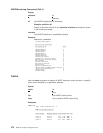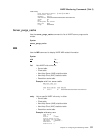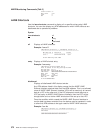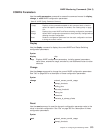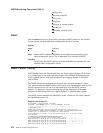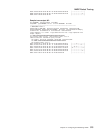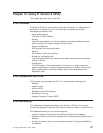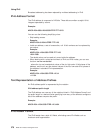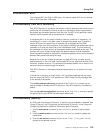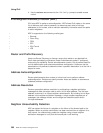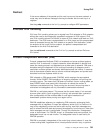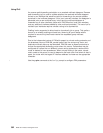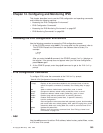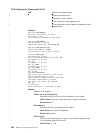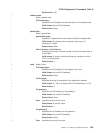
Broadcast addressing has been replaced by multicast addressing in IPv6.
IPv6 Address Format
The IPv6 address is composed of 128 bits. These bits are written as eight 16-bit
integers separated by colons.
Example:
ABCD:1234:0000:1234:5555:FFEE:7777:0123
You can use the following simplifying rules:
v Skip leading zeroes.
Example:
ABCD:1234:0:1234:0:FFEE:7777:123
v Inside an address, a set of consecutive, null 16-bit numbers can be replaced by
two colons.
Example:
ABCD:1234::1234:5555:FFEE:7777:123
1234::7899
The double colon can be used only once inside the address.
v When dealing with a mixed environment of IPv4 and IPv6 nodes, you can use
the form x:x:x:x:x:x:d.d.d.d
, where the x’s are hexadecimal values of the six high-order 16-bit pieces of the
address, and the d’s are the decimal values of the four low-order 8-bit pieces of
the address in standard IPv4 representation.
Example:
ABCD:1234::1234:5555:FFEE:1.2.3.4
::1.2.3.4
Text Representation of Address Prefixes
An IPv6 address prefix is represented by the notation:
IPv6-address/prefix-length
The IPv6 address can use any of the notations listed in “IPv6 Address Format” and
the prefix length is a decimal value specifying how many of the leftmost contiguous
bits of the address comprise the prefix.
Example:
ABCD:1234::1234:5555:FFEE:1.2.3.4/64
IPv6 Header Format
The IPv6 header has a total of 8 fields, eliminating some IPv4 fields such as
checksum and fragmentation.
Using IPv6
378
MRS V3.2 Protocol Config Ref Vol 2



